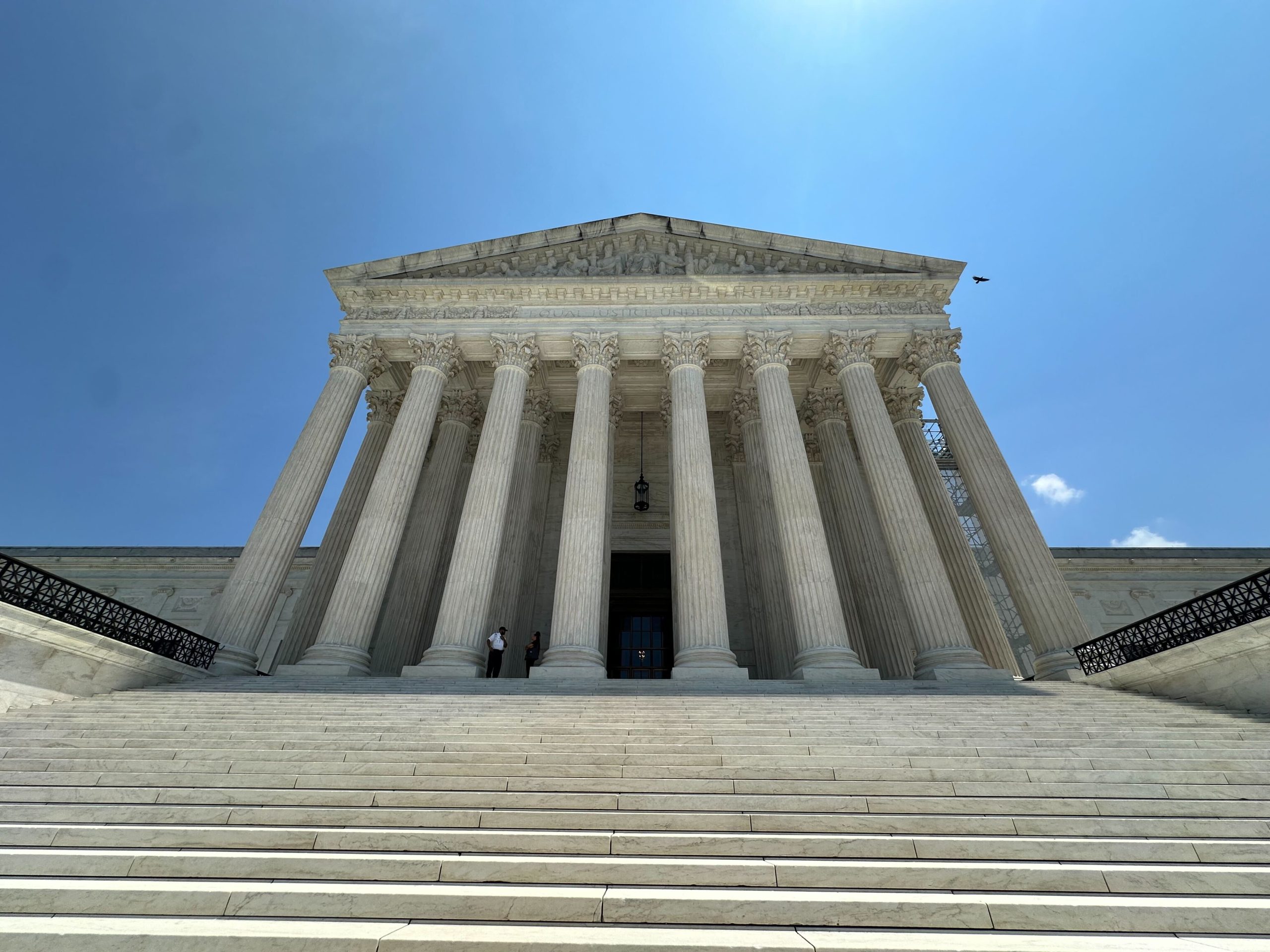SCOTUS NEWS
Supreme Court appears to allow emergency abortions in Idaho

on Jun 26, 2024 at 1:55 pm

This article was updated on June 26 at 4:08 p.m.
Bloomberg News has reported that the Supreme Court briefly accidentally posted an opinion on its website that would allow emergency abortions to go forward in Idaho. The court’s Public Information Office has issued a statement that the opinion in a pair of cases, Moyle v. United States and Idaho v. United States, was “inadvertently and briefly uploaded” to the court’s website.
Bloomberg’s Kimberly Robinson, Greg Stohr, and Lydia Wheeler suggest in their story that the order would dismiss the case without ruling on the merits, leaving in place a lower court order that bars the state from enforcing its abortion ban to the extent that it conflicts with a federal law, the Emergency Medical Treatment and Labor Act. That 1986 law requires emergency rooms in hospitals that receive Medicare to provide “necessary stabilizing treatment” to patients who arrive with an “emergency medical condition.”
In a copy of the document made available by Bloomberg, Justice Samuel Alito dissents from the decision to dismiss the case, calling the court’s “about-face” “baffling.” In an opinion joined by Justices Clarence Thomas and in part by Justice Neil Gorsuch, Alito accuses his colleagues of having “simply lost the will to decide the easy but emotional and highly politicized question that the case presents.”
Further, Alito describes the federal government’s theory at the center the case as “plainly unsound.” “Far from requiring hospitals to perform abortions,” he writes, “EMTALA’s text unambiguously demands that Medicare-funded hospitals protect the health of both a pregnant woman and her ‘unborn child.’”
The document also includes a partial dissent from Justice Ketanji Brown Jackson, in which she cautions that the ruling was “not a victory for pregnant patients in Idaho” but instead a “delay.” She too criticizes her colleagues, writing that the court “had a chance to bring clarity and certainty to this tragic situation, and we have squandered it.”
The Biden administration brought the dispute nearly two years ago in Idaho, which prohibits abortion except in a handful of narrow circumstances, including to save the life of the mother or in cases of rape or incest. It contended that EMTALA supersedes the Idaho ban, requiring hospitals that participate in Medicare to provide abortions in emergency situations to stabilize a pregnant woman even if it may not be necessary to save her life.
A federal district judge in Idaho issued an order that temporarily prohibited the state from enforcing its ban to the extent that it conflicted with the federal law, and the U.S. Court of Appeals for the 9th Circuit allowed that order to stay in place while litigation continued. The Supreme Court stepped in earlier this year, putting the lower court’s order on hold and hearing oral argument in the dispute in late April.
The brief order posted on the Supreme Court’s website on Wednesday dismisses the dispute as “improvidently granted” – that is, as one that should not have been accepted for review. The order does not provide any explanation for the disposition of the dispute, but a series of concurring and dissenting opinions offer some insight into the justices’ thinking.
In a brief concurring opinion joined in full by Justice Sonia Sotomayor and in part by Justice Ketanji Brown Jackson, Justice Elena Kagan agrees with the decision to dismiss the case because, in her view, there was no reason for the Supreme Court to intervene at this stage at all. She points to the need for hospitals in Idaho to air-lift medically fragile pregnant women to other states to receive abortions necessary to prevent serious health problems as evidence of the conflict between EMTALA and Idaho law. And with the district court’s order in place once again, she stresses, “the lower courts can proceed with this litigation in the regular course.”
Justice Amy Coney Barrett, joined by Chief Justice John Roberts and Justice Brett Kavanaugh, contends that the decision to dismiss the case is the correct one for a different reason: The dispute has been “dramatically narrow[ed].” Once the case reached the Supreme Court, the federal government took a narrower view of the scope of EMTALA, while Idaho indicated that its law would allow physicians to provide emergency abortions in some scenarios in which a woman’s life may not be in imminent danger. Because “the parties’ positions are still evolving,” and Idaho has also raised other constitutional questions that the lower courts did not address, Barrett concludes, the best course of action is to dismiss the case.
Jackson emphasizes that the Supreme Court normally dismisses cases as improvidently granted when there are circumstances that were not fully understood at the time that the court granted review. “This procedural mechanism,” she stresses, “should be reserved for that end — not turned into a tool for the Court to use to avoid issues it does not want to decide.”
Moreover, she adds, the court should resolve the question at the center of this dispute because it “is not going away anytime soon and will most certainly return to this Court.” In fact, she noted, the Biden administration has already asked the Supreme Court to take up a similar case out of Texas.
Assuming that the opinion temporarily posted on the court’s website on Wednesday is ultimately how the court disposes of the dispute, the case will then return to the lower courts for proceedings to continue there – at least a temporary victory for the Biden administration and abortion-rights supporters. But that could be short-lived. The lower courts could ultimately rule for abortion opponents, and in either event this case (or, as Jackson’s opinion suggests, a similar one) could return to the Supreme Court.
This article was originally published at Howe on the Court.


